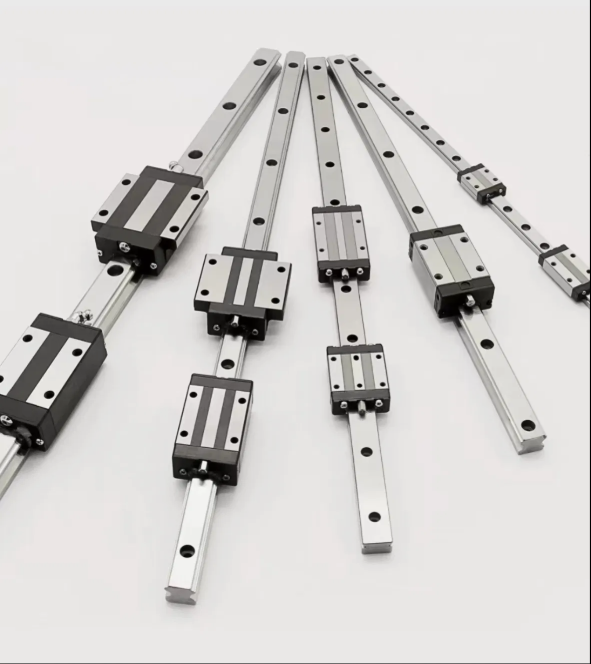The Complete Guide to Linear Guide Rails

Linear guide rails are one of the most important mechanical components in modern automation and manufacturing systems. They provide smooth, precise linear motion, reduce friction, and enhance the accuracy of machines — from CNC systems to 3D printers. Whether you are designing an industrial robot or a precision medical device, understanding linear guide rails is essential for achieving stable, repeatable movement.
What Are Linear Guide Rails?
Linear guide rails, also known as linear motion guides or linear bearings, are mechanical systems that allow objects to move in a straight line with minimal friction. They consist of two key components: a rail and a block (or carriage). The block moves along the rail using rolling elements such as balls or rollers, ensuring precise linear motion.
The main advantage of linear guide rails lies in their high precision, load capacity, and smooth motion. Compared to traditional sliding guides, they drastically reduce frictional resistance and can operate with micrometer-level accuracy.
Key Components and Structure
-
Rail: The rail is a precision-ground track made from hardened steel. It serves as the guiding base for the carriage.
-
Block/Carriage: The block contains ball bearings or rollers that circulate as the block moves, reducing friction.
-
Rolling Elements: High-quality steel balls or cylindrical rollers that roll between the rail and block.
-
End Caps and Seals: Protect the internal elements from dust and debris, extending service life.
How Linear Guide Rails Work
When a load is applied to the block, the rolling elements inside transfer the motion smoothly along the rail. Because rolling friction is much lower than sliding friction, linear guide rails deliver consistent, precise, and energy-efficient movement. This mechanism allows for high-speed operation while maintaining stability and accuracy.
Applications of Linear Guide Rails
-
CNC machines and milling centers
-
Semiconductor manufacturing equipment
-
3D printers and automation systems
-
Laser cutting machines and robotics
-
Medical imaging and laboratory automation
-
Packaging and textile machinery
Wherever precision and stability are crucial, linear guide rails play an irreplaceable role.
Why Choose Yinhe Transmission Linear Guide Rails
If you’re looking for reliable, high-performance linear guide rails, Yinhe Transmission is a trusted name in the industry. Their products are engineered for precision, durability, and stability, meeting the demands of industrial automation and high-speed machinery.
Visit https://yhlinear.com/ to explore a wide range of linear guide systems designed for efficiency and performance. With Yinhe Transmission, you can count on excellent craftsmanship, competitive pricing, and consistent quality backed by years of experience in motion technology.
Conclusion
Linear guide rails are the backbone of modern machinery, ensuring accuracy, repeatability, and long service life. Choosing the right system can dramatically improve productivity and reduce maintenance costs. For precision linear motion components, check out Yinhe Transmission at https://yhlinear.com/ — a trusted partner for quality and innovation in motion systems.
- Art
- Causes
- Crafts
- Dance
- Drinks
- Film
- Fitness
- Food
- Games
- Gardening
- Health
- Home
- Literature
- Music
- Networking
- Other
- Party
- Religion
- Shopping
- Sports
- Theater
- Wellness



